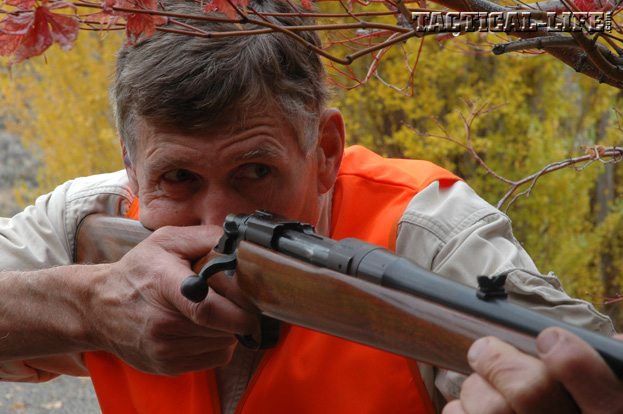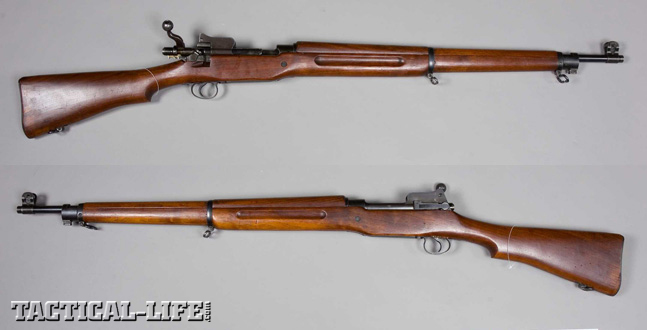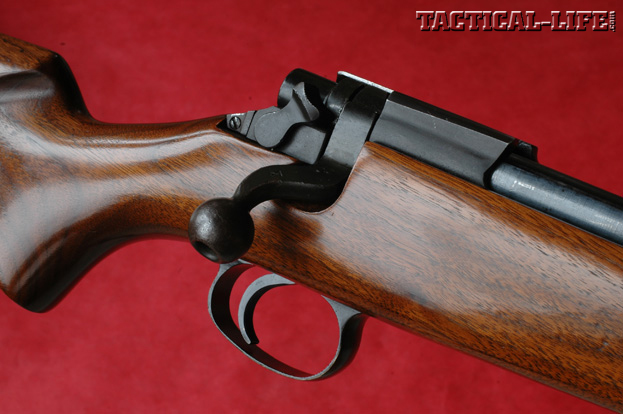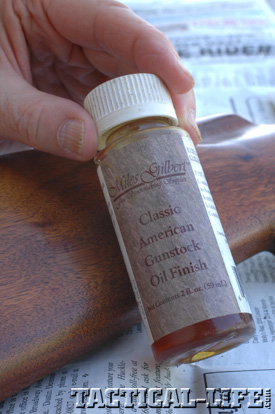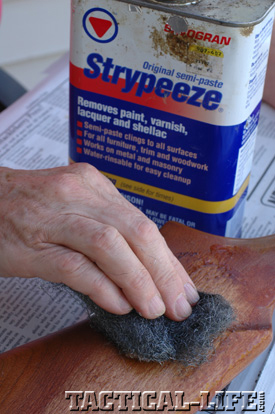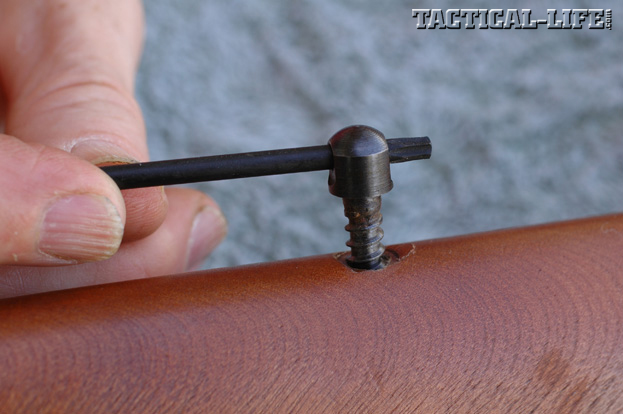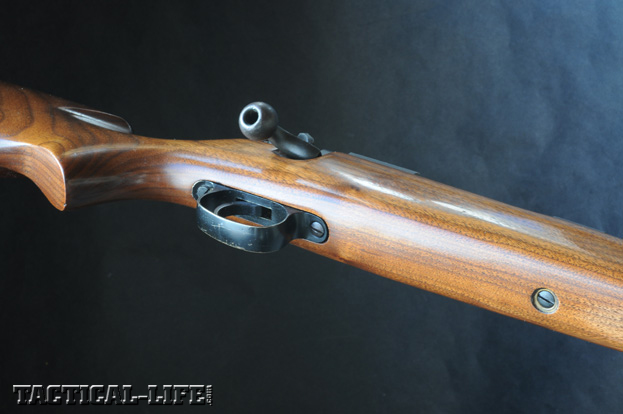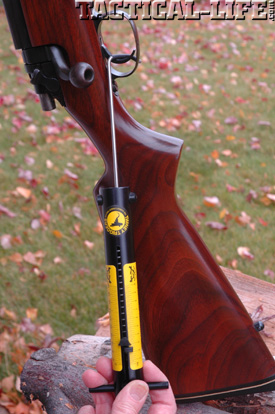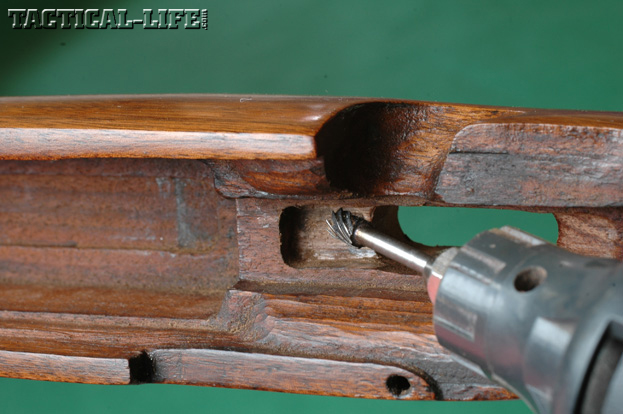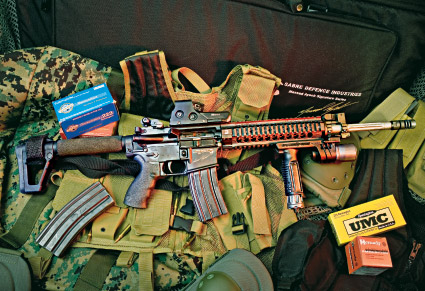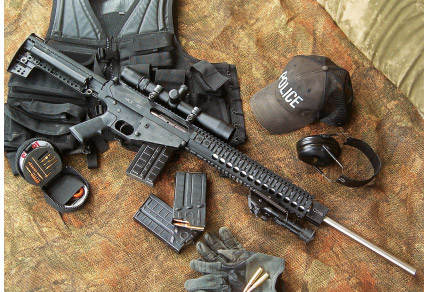My first hunting rifle was a Short Magazine Lee Enfield. I’d ogled at it for months in the brick-thick Sears catalogs that once carried surplus military hardware. I’d have preferred a Springfield. But they cost $29.95. At $15, the British infantry rifle more closely matched my means. I bought a semi-inletted stock from Herters for $7.50 and paid about that for Williams iron sights. In those days, refitting battle rifles was a popular pastime—not just for the impoverished, but for anyone keen to unlock the beauty beneath silvered steel and scarred wood. Springfield and Mauser actions became works of art under skilled hands at Griffin & Howe.
I had no illusions that my SMLE would look like a G&H sporter. But neither did I expect the split cases that emerged from its smoking chamber. New brass came out with a circumferential crack. Some separated. “A swelled chamber,” the local gun guru muttered sagely. I was impressionable and had yet to discover headspace. So I took his word that this was a lethal and inoperable condition. I returned the rifle and dug twice as deep for another SMLE from a local gunshop. Restocked, that .303 killed my first deer. I could cycle it at near-machine-gun cadence, matching the speed of my pal with his Model 94 Winchester. Remarkably, my old rifle would also feed empties! The stamped-steel box and follower looked cheap; but open-mouthed cartridges snicked in and out as if on rails.
The Other Enfield
Advertisement — Continue Reading Below
The Pattern 1914 Enfield was also British-designed. It evolved to fire a new .276-caliber rimless round. But when the Great War drew British troops to France, England dropped the .276 and revamped the action to take the rimmed .303 that for nearly three decades had distinguished itself in the SMLE. Manufacture was then contracted out to three U.S. manufacturers: Winchester, Remington and Eddystone. In 1916, when the British found they could build enough SMLEs to supply their troops, they cancelled their P14 orders. By this time, the U.S. was preparing to engage Germany and couldn’t help but notice that three big arms factories were tooled up to produce the P14. It may have been Remington that started modifying these rifles to accept .30-06 ammunition. So chambered, they became the “U.S. Rifle, Cal. 30, Model 1917.” Or, more commonly, the 1917 Enfield. Contracts followed.
The run was brief indeed. Production ended with the war in 1918. Remington and Winchester delivered a few more than 545,500 Model 1917s each, while Eddystone built nearly 1.2 million. The total included roughly 80,000 unassembled units held as spare parts. Popularly known as 1917 Enfields, these rifles (which cost the government about $26 apiece) turned up en masse on the surplus market following the armistice. More appeared after the Garand replaced bolt-action service arms in World War II. The 1917 was hardly a top pick of custom gunmakers, who preferred the leaner Mauser and Springfield. A dogleg bolt handle and massive ears protecting the rear sight made the Enfield homely. At 9.5 pounds, it was heavy, too; and, like the SMLE, it cocked on closing. It was many hours and operations shy of a svelte sporter!
But the 1917 Enfield is a strong action, with a receiver machined from 3.5-percent nickel forging. Well-finished by military standards, it features a smooth-shucking bolt. Two burly front locking lugs hold .30-06 pressures easily. A deep notch for the bolt handle enables it to serve as a third or safety lug. A full-length stock cradles a 26-inch barrel rifled 1:10 with five left-twist grooves. (Later rifles had two- and four-groove barrels.) With slight modifications of the bolt face and extractor, the 1917 can feed short-belted magnums. The receiver is long enough that, with a bit of work to magazine and ramp, it will swallow full-length magnums like the .300 Holland & Holland. Many Enfields have been barreled to .300 Weatherby.
Advertisement — Continue Reading Below
A Chance Encounter
The 1917 Enfield I spied on a rack in a rural Montana gunshop a couple of years ago was an ’06. Its ears had been ground off, and a folding leaf sight had been dovetailed into the barrel, which appeared original. Lopped to 24 inches, it wore a cheap ramp front sight, not the issue banded blade. Someone had whittled, crudely, a plain stick of American walnut into a sporting-style stock. The bottom metal was gone; a blind magazine had issue innards, including the square-backed follower to hold the bolt open after the last shot. Trigger and safety were unaltered. The blackened brass trigger bow was pleasingly shaped, but secured by screws that must have been picked off the floor of a chop shop.
The Enfield was tagged at $150—reflecting current demand in Montana for surplus ’06s with no holes for scope screws. “Will you take $125?” I asked. The proprietor divined, rightly, that this was my final offer.
Advertisement — Continue Reading Below
He shrugged. “Sure.” He reached for a 4473. “A solid gun. Might be more there than you see.” He scrounged for a pen, laid it on the form. “But you know that.” He smiled.
This was a charitable way of saying I’d never make minimum wage wresting a sporting rifle from the scuffed steel and low-grade wood.
At my range, the Enfield functioned well. But the comb was too high to align eye with the sights. I cut it down with a circular saw and a rasp. A dime-size gouge in the forend had been filled with bedding compound. I left that be as I steamed out handling dings and refined the shape of the stock, sanding with an artgum eraser as a block, to make rounded edges crisp and the surface as flat as soft walnut could be. I left the hard, black, rubber buttplate despite its imperfect shape and white spacer. Then I drilled holes for sling swivel studs and sent to Midway for a Miles Gilbert stock finishing kit.
Advertisement — Continue Reading Below
Stock Refinishing
In another life, I had worked for a gunshop refinishing rifle stocks, trying to match the original look or put an aged glow on new wood. I experimented with a range of finishes, from boiled linseed oil to fast-drying substitutes like Linspeed and even high-gloss epoxies. I faithfully followed the routines of the masters in preparing the wood, applying coats of sealer and then sanding the surface flat until the pores glittered like stars. A hard, close-grained piece of European walnut would then take an oil finish most gracefully—provided I was patient enough to apply thin coats, rub them in until my hand got hot and given the finish time to dry thoroughly. I found a slurry of rottenstone and boiled linseed oil most useful in the final stages, when I had to smooth the surface without cutting through the oil. This brew also blended areas that didn’t take finish evenly.
But as I got older and lazier, I sought finishes that gave me quicker results with less effort. Trials sold me on the Miles Gilbert kit. It includes not only finishing oil, but also quality sealer and a stain that can be mixed to match almost any color. The filler paste works as advertised, too—though, after opening the packet, it must be used quickly. Each kit has enough sealer for three stocks; it also delivers a pleasing semi-gloss finish without the oil!
Advertisement — Continue Reading Below
After a couple of weeks with Miles Gilbert, the stock for my salvaged 1917 gleams with a soft, warm color invisible when I’d spied the relic. The completed rifle not only looks sleeker; it feels livelier—though it weighs 7.25 pounds. Thank the newly contoured stock. The proprietor had been spot on: There was more here than we’d seen!
